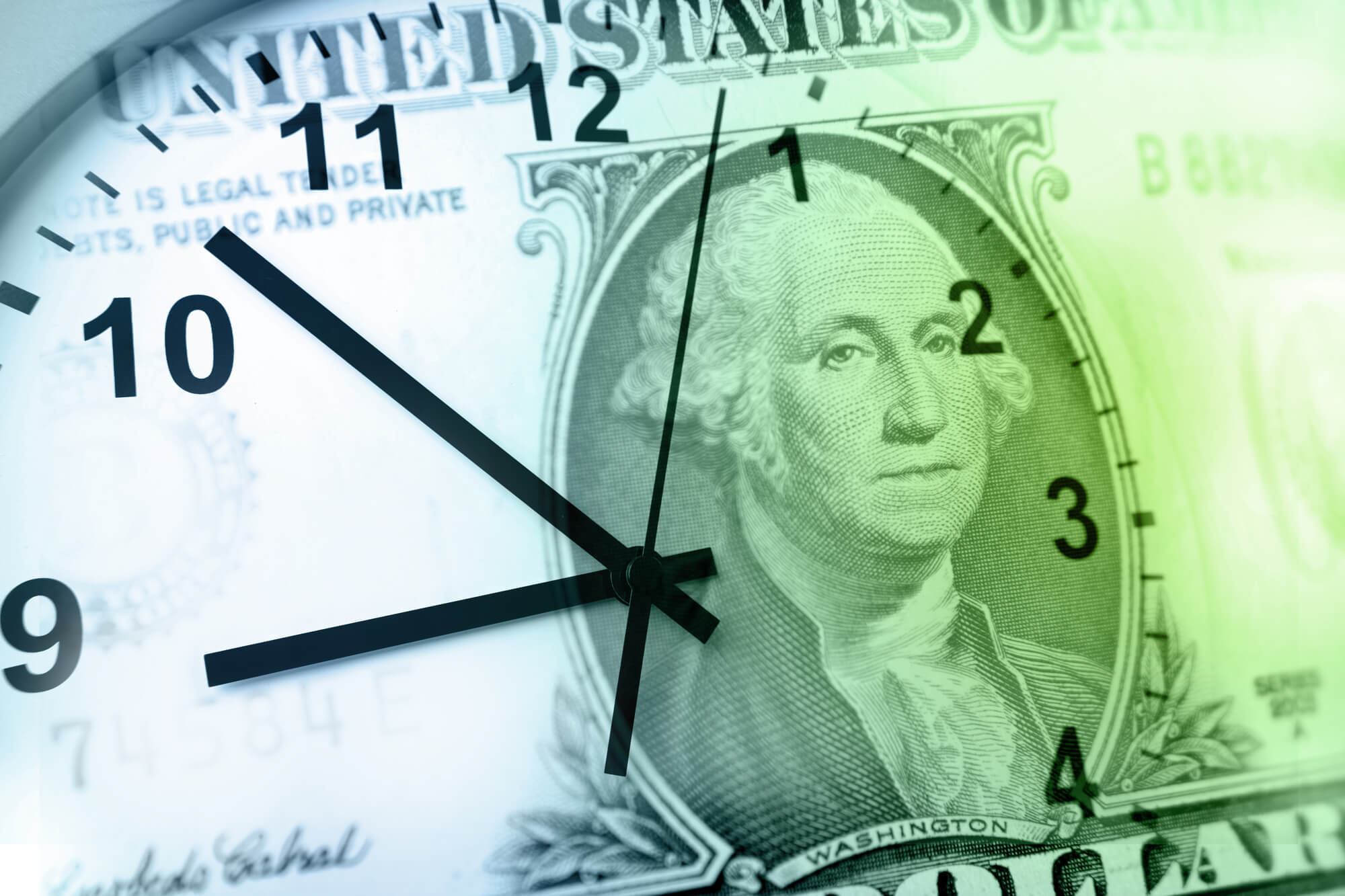No matter how old you are, it’s important to think through spending decisions and treat your money with respect. However, if you’re a kid, there are a few things you can do to help prepare you to spend your money as wisely as possible.
1. Determine what to buy within your price range.
The first thing you will want to do is understand what your money can buy. If you don’t have enough money to buy something, you can’t have it, even if you really want it! If I want to buy a board game, and it costs me $20, I can only buy it if I have $20 or more. If I have $25, and I choose to buy the board game, I’ll be left with $5, which I can spend on something cheaper than a board game. But I don’t have enough money to buy two board games.
Because you can only buy so many things with the money you have, think about what you want most. If I have $25, I could buy a board game for $20 and maybe a smaller item for $5. But if I actually want a sweatshirt that will cost me $30, I shouldn’t buy the board game, and I should save up for the sweatshirt! Just because you have enough money to buy something doesn’t mean you need to spend it. To decide what you want to buy most, make a list of items you want, and put them in order. Think about which will bring you the most happiness, and determine to buy that item first or save until you have enough money to purchase it.
Another important step to determining what to buy within your price range is to do a product comparison. A product comparison is just what it sounds like: it is comparing two similar items to see which is the better deal. For example, if I want to buy a new basketball, I should look online (with the permission of an adult!) to see how much basketballs cost. I should see if I can find one that is cheaper than the others, but still has good reviews (the star rating you see next to items online). Then, I could go to a store and see how much the basketball costs. After I have looked at a few different basketballs, I can choose the one that is either the cheapest or the one I like the most. Doing a product comparison helps you know that you are buying a good version of whatever it is you are looking to purchase.
2. Learn about opportunity and true costs and apply them to your purchases.
Opportunity cost is a term used to describe what something costs outside of its dollar price, and you can use it to help you complete the first tip in this list (deciding what to buy). For example, the price of a board game I want could be $25. Maybe my favorite candy bar only costs $1. The opportunity cost of buying my board game is 25 candy bars, because for the same amount of money I use to buy the board game, I could also buy 25 candy bars. Think about which is more important to you: you can purchase fewer expensive items or more cheap items.
Alongside opportunity cost is another term: the “true cost” of an item, or how much it costs aside from money to purchase something. If I want a board game that costs $25, but I make $5 a week doing chores, then the true cost of my board game is not just $25 but also the five weeks it will take me to earn enough money to purchase it. In this example, I need to decide if I want the board game enough to work five weeks for it, just as you need to think about what is valuable and worth it to you.
3. Make a budget and create a spending plan.
A budget is a term for a plan you create to decide how to save and spend your money. Budgets are important because they help you spend less money than you have and spend money in meaningful ways. Here is an example of a budget:
| Total Amount of Money I Earn Each Month | $20 |
| Budget Item | Amount |
| Savings | $5 |
| Movie tickets | $10 |
| New T-shirt | $5 |
In this example budget, I make $20 each month doing chores. I need to decide how to spend that $20. I put $5 into savings to use for emergencies or college, spend $10 on movie tickets, and $5 on a new t-shirt. Each month, when I make more money, I add that money into the separate buckets above (savings, movie tickets, and T-shirts). If I decide I want to buy something else, I can create a new row on my table for it.
I can also use a budget to save money for more expensive items. If I want to buy a pair of headphones that cost more than the $20 I earn each month, I can create a new row in my budget called “Headphones” and put $5 in it. I could choose to only spend $5 on movie tickets, or not buy a movie ticket at all, and put that money in my “Headphones” row. Then, after I have worked enough to buy my headphones, I can start saving for something else and remove it from my budget.
After creating a budget, think about telling your parent or guardian about it and the goals you have. They can help motivate you and keep you on track.
4. Keep a record of everything you purchase.
Whether you buy something online or in a store, make a habit of keeping a record of every purchase you make. This means keeping the receipt if you go in a store, or saving the email if you buy something online. This allows you to track what you are buying, and can help gauge whether or not the purchase was worth it. Do you regret spending $10 on food at the grocery store when you felt like there was already enough food at home? (Of course spend money on food at the store if you don’t feel like you have enough!). Are you upset you purchased a T-shirt last month that you don’t actually wear? Keeping a record of what you have bought will help you learn from your past purchases about what you need and don’t need.
5. Avoid buying things without thinking about it first.
Making a purchase without having the right amount of time to think about it first is called an impulse buy. For example, pretend I’m saving up for a $45 pair of headphones and I make $20 a month. I have $25 right now. I go to the mall and see a $20 jacket that I think looks fabulous! I decide to buy it right then and there in the store, without thinking about my headphones. After purchasing the jacket, I only have $5. It will now take me two more months of working to buy my headphones, even though if I had not bought the jacket, I would be able to buy the headphones after just one more month of working! I didn’t have time to think about buying the jacket, so maybe when I get home I realize I don’t actually like how it looks on me.
In this situation, it would have been better if I had waited to buy the jacket so I could have decided if it was truly worth it to me. There are a couple of rules you can follow to avoid making impulse buys (purchasing something without thinking about it first).
| Rule Name | Rule Description |
| 24-Hour Rule | Go home from the store and think about the item for 24 hours. If at the end of the 24 hours you still want it, and you’ve decided you want it more than the other items you were planning on buying, go ahead and buy the new item! |
| 30-Day Rule | Go home from the store and think about the item for 30 days. This can seem like a long time, but it’s very useful when you’re thinking about buying an expensive item, such as an iPhone. Because it costs so much more, the decision needs to be taken more seriously! If at the end of 30 days you still want it, and you’ve decided you want it more than the other items you were planning on buying, go ahead and buy the new item! |
6. Learn how to bargain shop and buy things on sale.
If you want your money to go farther, learn how to buy cheaper things. Ask your parents or guardian if you can go shopping at a thrift or second-hand store (where items are donated and have already been used) or to go to the store when there is a sale. You can find out about sales online or by calling stores. If you want to buy a sweatshirt that is $25, but you wait two months until it’s on sale for $10, you have $15 leftover to spend on something else! Or, if you find a used skateboard at a second-hand store, you can buy that and buy a new helmet, maybe just for the price of one new skateboard. You can make your money last longer when you shop sales or buy things used.
7. Take care of what you purchase.
It’s not just deciding how to spend your money that matters. To make the most of your money, you need to take care of what you purchase! If you take care of your headphones that cost you $50, you can make them last for years to come. That means you only spent $50 on those headphones. But if you don’t take care of them and they get vacuumed up, or run over in the driveway by your parent, you will have to save and buy new headphones. All of the sudden, you’ve spent $100 on headphones! You could have spent the other $50 on something else if you had been more careful with the first pair. When you take care of what you purchase, you are able to make your money last longer.
8. Go shopping with a parent or guardian.
You might not have to worry about buying food right now, but in the future, you will have to! An easy way to understand how to spend your money wisely, especially on basic items such as food or clothing, is to go shopping with a parent or guardian. Ask them to talk to you while you are walking the aisles. What are they looking for? How do they make purchasing decisions? How do they know which items are on sale? Are their certain items they buy more of because it’s cheaper? If you go shopping with a trusted adult, you can learn how to think about money like a responsible adult, and use some of the tips you hear from them in your own purchasing decisions.
9. Choose to save a certain amount now and in the future.
This is probably the most important tip in this list: you should always save money, both now and in the future. The amount of money you choose to save isn’t as essential as making the habit of saving. As shown in the budgeting tip, you can save money for either a big purchase or emergencies and college. Saving for emergencies and college is something known as “paying yourself first”. Developing a habit of saving money now will help you when you have a job as a teenager or adult to be able to be disciplined and save money for what matters most, setting yourself up for success in the future.
Conclusion
If you are looking to spend money wisely as a kid, start with these 9 tips as you think about making purchases with your allowance or earnings.
Climb on, FinBase.
B









